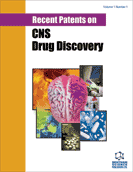Abstract
Despite the intensive recent research in cancer therapy, the prognosis in patients affected by high-grade gliomas is still very unfavorable. The efficacy of classical anti-cancer strategies is seriously limited by lack of specific therapies against malignant cells. The extracellular matrix plays a pivotal role in processes such as differentiation, apoptosis, and migration in both the normal and the pathologic nervous system. Glial tumors seem to be able to create a favorable environment for the invasion of glioma cells in cerebral parenchyma when they combine with the extracellular matrix via cell surface receptors. Glioma cells synthesize matrix proteins, such as tenascin, laminin, fibronectin that facilitate the tumor cells motility. New treatments have shown to hit the acting molecules in the tumor growth and to increase the efficacy and minimize the toxicity. Antisense oligonucleotides are synthetic stretches of DNA which hybridize with specific mRNA strands. The specificity of hybridization makes antisense method an interesting strategy to selectively modulate the expression of genes involved in tumorigenesis. In this review we will focus on the mechanisms of action of antisense oligonucleotides and report clinical and experimental studies on the treatment of high-grade gliomas. We will also report the patents of preclinical and/or clinical studies that adopt the antisense oligonucleotide therapy list in cerebral gliomas.
Keywords: Angiogenesis, antisense oligonucleotides, extracellular matrix proteins, high-grade gliomas, nanoparticles
 37
37

